Kevin Swift
gamer level 3
823 xp
823 xp
followers
5
5
Use my invite URL to register (this will give me kudos)
https://boardgaming.com/register/?invited_by=notso
profile badges
recent achievements

Rated 5 Games
Rate 5 games you have played.
Rate 5 games you have played.

Gamer - Level 3
Earn Gamer XP to level up!
Earn Gamer XP to level up!

I'm a Real Player!
Claim that you have played a game today by clicking the "Played Today!" button on a game page 25 times.
Claim that you have played a game today by clicking the "Played Today!" button on a game page 25 times.

I'm Gettin' the Hang of It
Claim that you have played a game today by clicking the "Played Today!" button on a game page 10 times.
Claim that you have played a game today by clicking the "Played Today!" button on a game page 10 times.







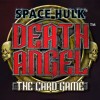






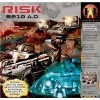









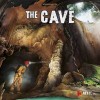

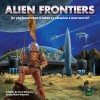
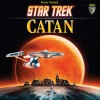
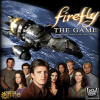



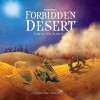

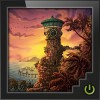

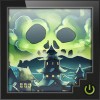
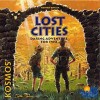



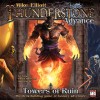


K2
I have played this game a number of times now: once with 4, a few times with 3 players, and the other times with 2 players.
This game’s execution is far better than I originally assumed it would be. Let me explain: I thought it would be hard to create a good climbing game and assumed this would feel more like Chutes And Ladders or Sorry than a true strategy game. However, I have found that it is well balanced; it is simple with a lot of subtle, nuanced strategy; and it is just plain fun.
To know what I am talking about, you may need to go familiarize yourself with the rules. This post will probably be long enough without trying to give context with rules explanation.
Well balanced: The board. I have only played the easy side of the mountain, but it is incredible how well the mountain gets harder as you scale the mountain both in terms of the movement required and the acclimatization required. It does not feel impossible to make the top and survive with both climbers, but you soon find out that you have to be extremely careful.
You push too hard and get caught in bad weather, your acclimatization can go down by 4 in an instant, and given the max possible acclimatization is 6, you can find yourself in trouble fast. So, especially at the top where bad weather is more common, you’d better have some large acclimatization cards to play on your next turn because otherwise your climber will die.
On the other hand, if you plan your assent carefully and move a little slower, you can be pretty certain that your climber will survive.
Getting both climbers to survive? For that you will probably find that you never get both climbers to the top if you want both to survive.
Of course, there is a bit of luck to this game too. You can get bad cards and have things go south on you. In a way, that only makes the experience more real, though; more true to the risk a K2 climber really takes. Not only could that happen in real life, but the game’s player card system (of drawing cards and choosing what you want to do) allows you to mitigate that randomness most of the time.
The cards also are well balanced. For example, there is a good distribution of 1-3 movement cards to give you interesting, different options. You have the ability to sometimes scale the mountain quickly, but if you do that, you will be forced to move much slower in subsequent turns (because you simply won’t have the cards to move fast). Of course, you can also achieve a balance, moving neither fast nor slow.
Strategy: When you go up the mountain the first time or two, you might not think there is much more to the game than the race. However, you will eventually notice how clogged the top of the mountain gets and how a player can potentially block climbers ascending or descending. Then you start to get devious. The other player got his climber to the top of the mountain first? Ok. Pitch a tent below him and camp there. You might just trap him/her on the top of the snowy, freezing mountain and kill the climber, reducing the victory points from 10 to 1. Devious and, excuse the pun, cold-blooded.
Also, each player has 2 climbers, which works way better than I expected. I thought this would make the game cumbersome, but found that having 2 climbers only enhances the strategy: now you have to decide whether to move your climbers together and/or when to break them up so one can make a rapid charge toward the mountain top. 2 climbers also gives you a better chance to block other players too, as previously described, if you can do it and keep both of your climbers alive.
Fun: The game is easy to teach and pick up as the rules are light. They are simple yet effective. Moreover, a game goes pretty fast once everyone knows the rules. You could easily complete a game within 30 minutes if everyone stays focused. Finally, with the games subtle strategies, I found myself congratulating opponents on clever moves or cursing myself for getting careless. That meant I felt like I was learning. I wouldn’t do that again, or now I know what I would do to my opponent in that circumstance next time. End result: I wanted to play again and again to not only even the score but, more importantly, see if I could pull of those new strategies I contemplated.
I have not yet played this game solo or with 5 players, but I still feel I have played this game enough to give you the solid review I gave above. It is fun, fairly simple, and has a fair amount of replayablitity. Hence my high rating. There are only a few knocks on it:
1) It can be hard to find at a decent price point
2) It is simple enough that if you played it a lot, I think you could burn out on it fast. It is replayable, but it works best for me when I bring it out every few game nights instead of playing it a lot. The simplicity is nice for new players but could reduce replay value if you game often.
3) The theme turns some people off. I love the theme but some friends haven’t wanted to play it simply because they were not interested in climbing or in a climbing game.
Nevertheless, I still highly recommend this game. Get to the top and enjoy the tense moments it brings.